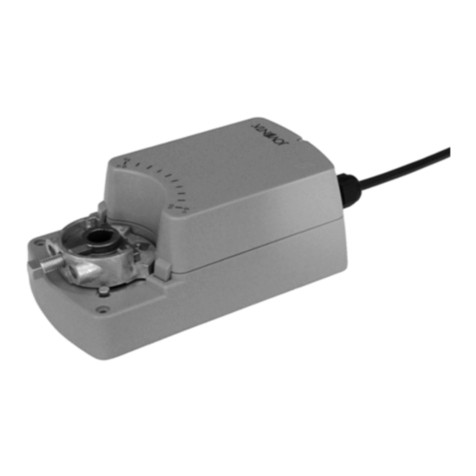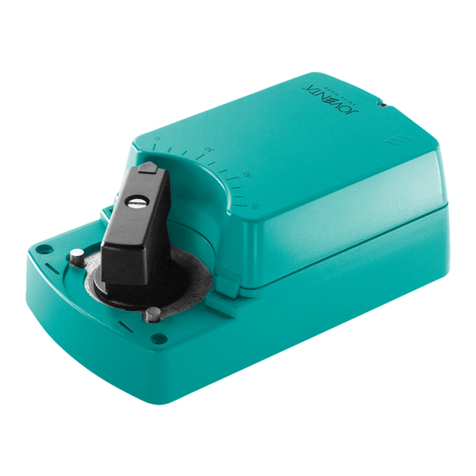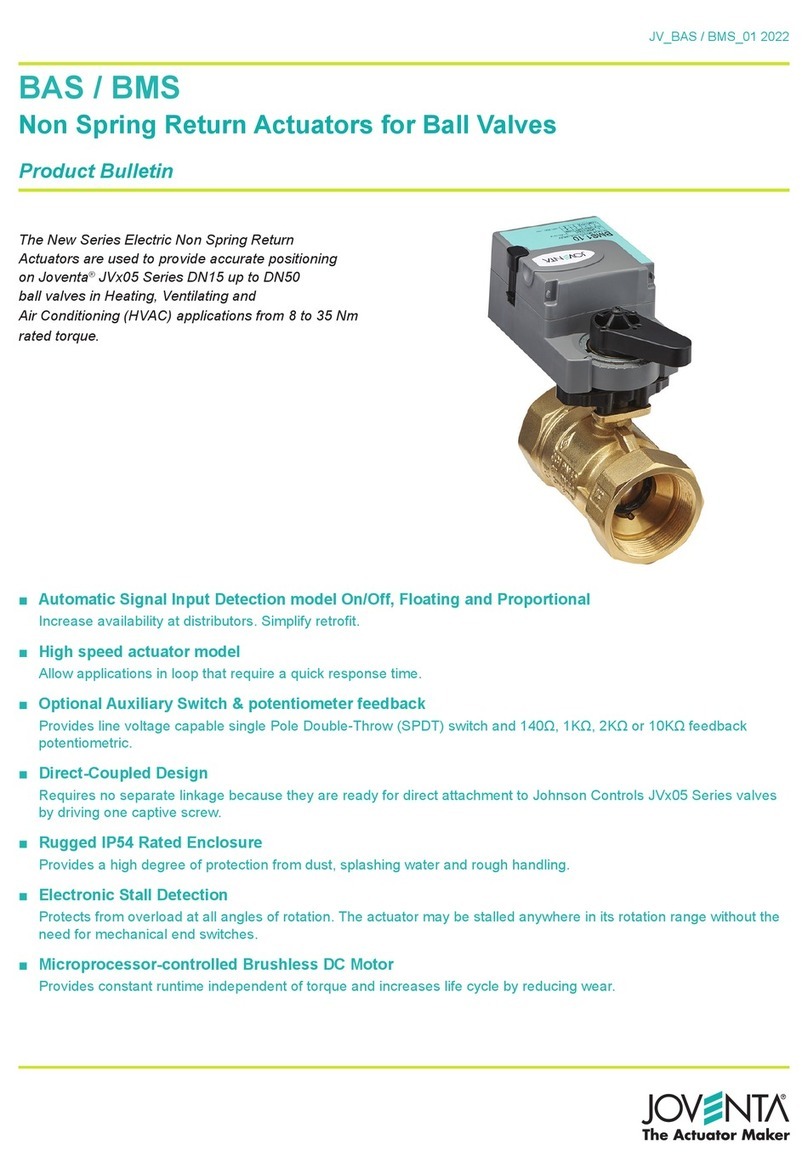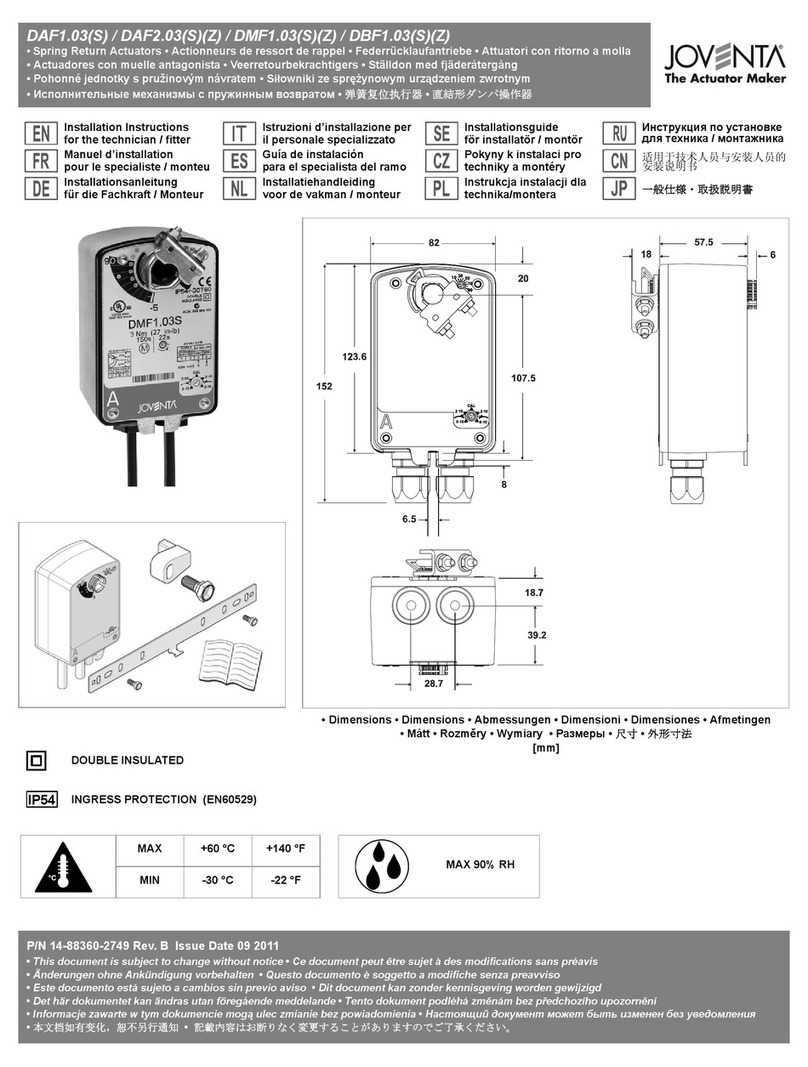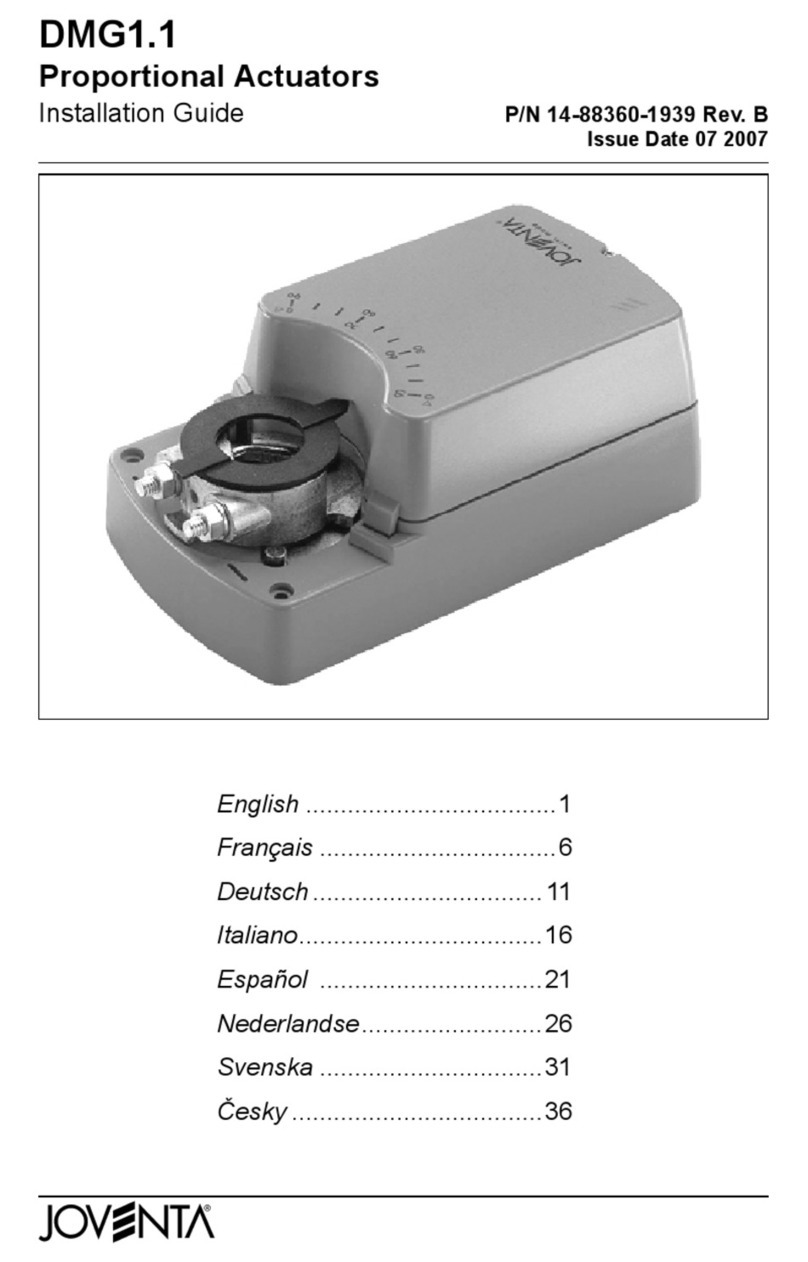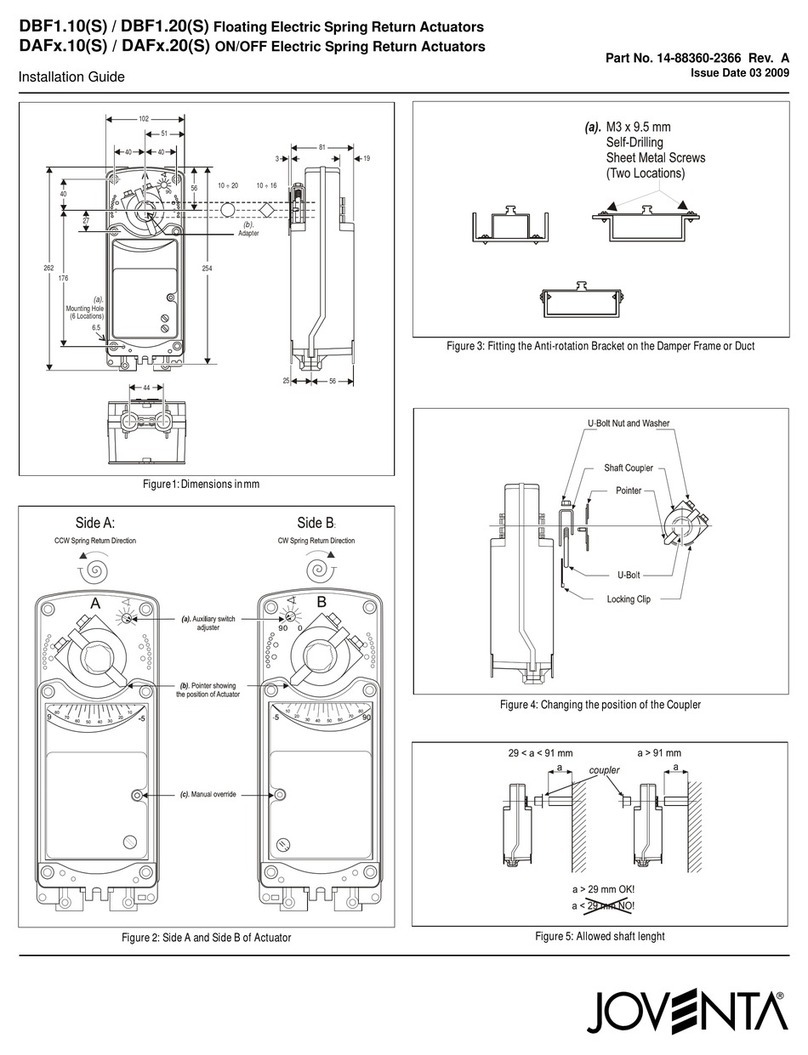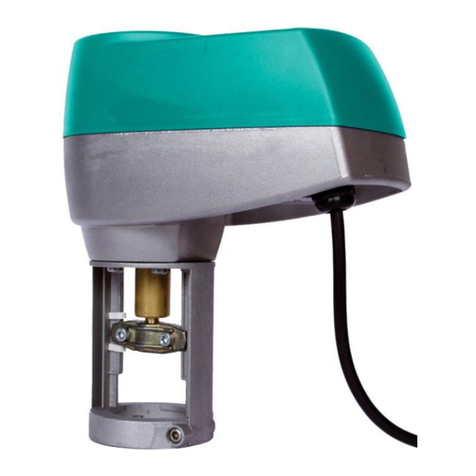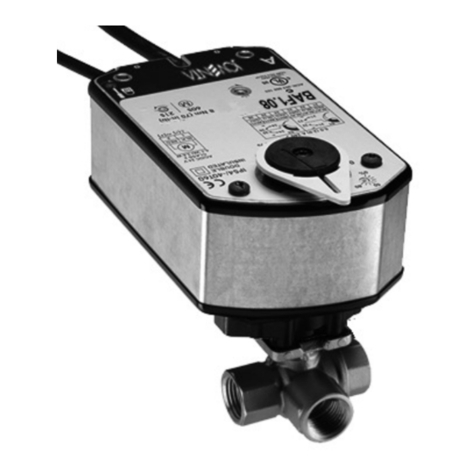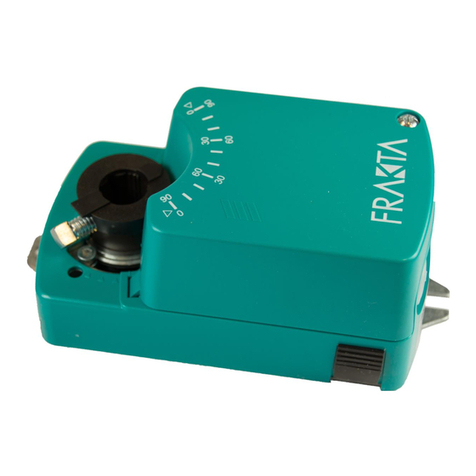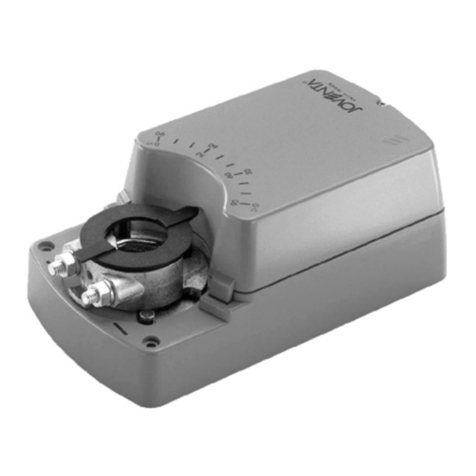
2DAS / DA / DAL
Installation and adjustment
Figure 3: Mounting Instructions
Installation
Attach the actuator to the damper spindle by means of the adapter and
secure the locking device with the screws provided.
Angle of rotation limiting
An angle-of-rotation/working range (Figure 2 f1.) of less than 90° can be
limited mechanically by repositioning the adapter in 5° steps as required.
The adapter is released by simply pressing the adapter clips on the lower
side of the actuator (Figure 2 f2.).
Selecting the direction of rotation
• In order to reverse the direction of rotation (CW/CCW), loosen screw
(See Figure 1 a.) and remove the cover.
• Reverse the motor connector (See Figure 2 c.).
• Factory setting: Clockwise (CW) rotation.
Wiring
WARNING:
• The electrical connections for the actuators must be
executed in accordance with the relevant legal requirements.
•In order to avoid any personal injury or damage to the
equipment or other property, always isolate the power
supply before commencing any work on the electrical
wiring.
• In order to avoid danger to property, it is important for the
equipment to be used solely for which it is intended.
WARNING: The integrated circuits in the actuator are
sensitive to static electricity. Take suitable precautions.

